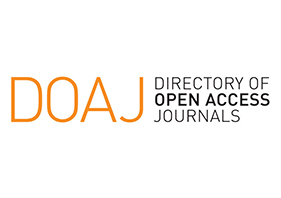Fault analysis aproach applied in hidroelectric plants
DOI:
https://doi.org/10.33304/revinv.v13n1-2019006Keywords:
Mobile blades, bushings, seal, screw, ACR.Abstract
In this paper, the different root cause analysis (ACR) methodologies referenced in the literature were described and each step of the PROACT methodology are presented in detail used to analyze the failure that was presented in the mobile blades of the Francis turbines in the hydroelectric of Alto Anchicaya. According to Empresa de Energía del Pacífico - EPSA criteria, this type of failure, because it is complex in a generation plant, requires a priority level of intervention, for this reason, this failure was analyzed using the Proact Suite V 4 software as a tool to facilitate the follow-up of the steps of the methodology and systematize and standardize the different failure analyzes that have occurred in their different generation plants. As a result of this methodology, three elements of the turbine involved in the fault were determined: Intermediate bushings, Asparagus and Packs, this identification allowed to establish corrective measures to reduce its occurrence. The main cause was located in the intermediate bushings of the mobile blade and determined that the material of the bushings that best fits the working conditions of the blades are the D-glide bushings.Downloads
References
Center Inc, R. (n.d.). Problem Solving Methods. project management & maintenance.
Contreras, L., Lucietto, D., Santos, J., & Aguillón, O. (2010). Análisis Causa Raiz De Un Sistema De Generación De Vapor. Retrieved from https://es.scribd.com/document/143328511/Analisis-Causa-Raiz-Vapor
Domínguez, U. (2012). Máquinas Hidráulicas. (E. C. Universitario, Ed.).
Doshi, J. C., & Trivedi, B. (2013). Decision support system using DMAIC for academic scheduling: ICT in education support activities. Proceedings - 2013 IEEE 5th International Conference on Technology for Education, T4E 2013, 73–75. https://doi.org/10.1109/T4E.2013.26
Duphily, R. J., Harder, H., Morehead, R., Haman, J., Gjerde, H., Dubois, S., & Loman, J. (2014). Root Cause Investigation Best Practices Guide. AEROSPACE CORP EL SEGUNDO CA.
Fallis, A. (2013). Estrategias para eliminación de defectos como elementos basicos del gerenciamiento de la confiabilidad. Journal of Chemical Information and Modeling, 53(9), 1689–1699.
Florez, R. O. (2005). Pequeñas Centrales Hidroeléctricas. (Emma Ariza Herrera, Ed.).
Gano, D. L. (2011). Seven Steps To Effective Problem-Solving And Strategies For Perosnal Success.
Kim, D. S., Baek, D. H., & Yoon, W. C. (2008). Developing a Computer-Aided System for Analyzing Human Error in Railway Operations. Korea Advanced Institute of Science and Technology, Daejeon, Korea1,3; Hanyang University, Ansan, Korea2.
Lárez, A. (2012). Análisis causa raíz para la resolución de problemas. Programa Business, Your International Sc, Ing M,.
Lederer, J. F. (2004). Air Safety Through Investigation. Jerome F. Lederer in a Photo by Bruce Stotesbury, Victoria Times Colonist (Victoria, British Columbia, Canada) Taken during ISASI 2001 and Used in a Feature Article Titled From the Wright Brothers to the First Man on the Moon., (June).
Moderm Engineering (ME). (n.d.). Modern Engineering Pty Ltd. Retrieved from http://www.modeng.com.au.
Paradies, M., & Unger, L. (2000). Using the TapRooT System for Process Safety Incident Investigation and Root Cause Analysis. Copyright 2000 by System Improvements, Inc., Knoxville, Tennessee.
Pascal, Á. C., & Rodríguez, J. P. (2016). Determinación de las características hidrodinámicas de dos sedimentadores sedhelcon para el tratamiento de aguas residuales. I+ D REVISTA DE INVESTIGACIONES, 7(1), 117–124. Retrieved from http://www.udi.edu.co/revistainvestigaciones/index.php/ID/article/view/85
Tobergte, D. R., & Curtis, S. (2013). Caracterizacion de una turbina del tipo Francis utilizada por una empresa local de generacion de energia. Journal of Chemical Information and Modeling, 53(9), 1689–1699. https://doi.org/10.1017/CBO9781107415324.004
Ziedelis, S. & Noel, M. (2011), Comparative analysis of nuclear event investigation methods, tools and techniques. European Commission, Joint Research Center (EC/JRC), EUR, 24757.












